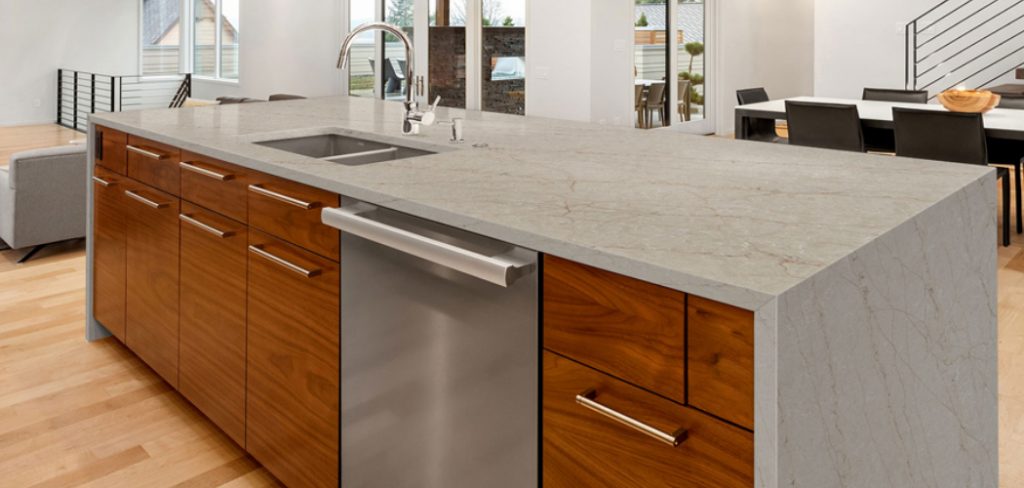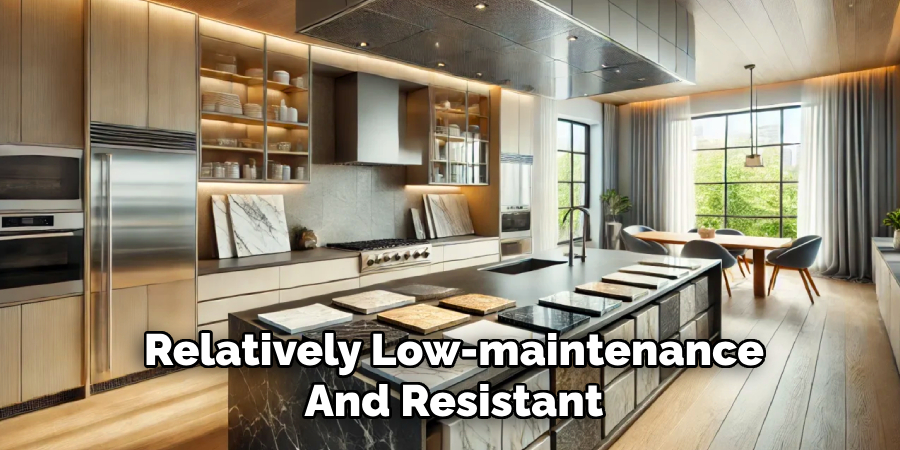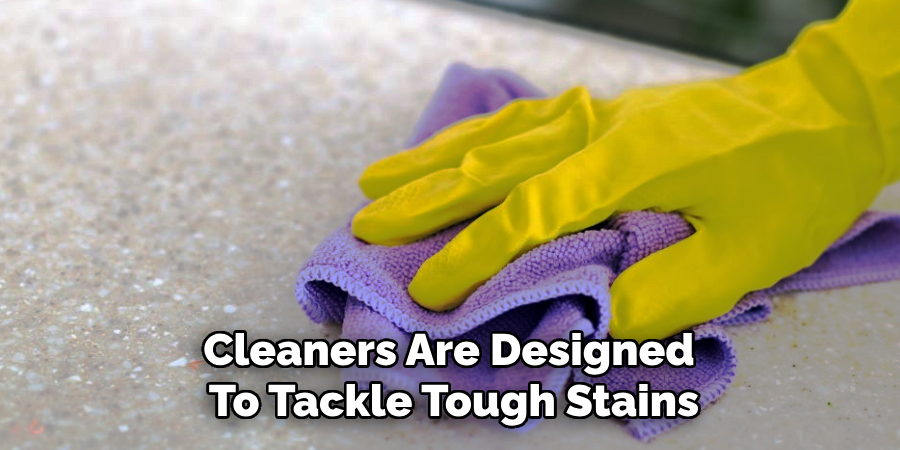Porcelain countertops are a popular choice for their durability, sleek appearance, and low maintenance requirements. However, keeping them clean and looking their best requires understanding the right techniques and using suitable cleaning products. In this blog post we will show you how to clean porcelain countertops so that it functions properly. Read on to learn more about which components and tools are needed for the job as well as detailed instructions on completing the task!

Why Porcelain Countertops Are a Top Choice for Modern Kitchens
Porcelain countertops have become a favorite among homeowners and designers alike due to their exceptional versatility and performance. Made from high-quality ceramic materials, they are non-porous, making them resistant to stains, scratches, and moisture—ideal for the demands of a busy kitchen. Additionally, porcelain countertops come in a wide range of colors, patterns, and finishes, allowing them to mimic the look of natural stone or other premium materials while remaining budget-friendly.
Their durability ensures they withstand the rigors of daily use, and their heat-resistant properties provide peace of mind when placing hot cookware directly on the surface. Eco-conscious buyers also appreciate porcelain for its sustainability, as it is often made from recycled materials and can be recycled at the end of its life span. These qualities, combined with their modern aesthetic, make porcelain countertops a top choice for contemporary kitchens.
Understanding Porcelain Countertop Surfaces
Porcelain countertops are manufactured using a process that involves firing fine ceramic clay at extremely high temperatures. This process creates a dense, durable surface that is impervious to water and resistant to wear. The surface of porcelain countertops is typically treated with a glaze or finish that enhances their appearance while providing additional durability and protection. These surfaces can vary in texture and finish, ranging from polished and glossy to matte or textured, allowing homeowners to choose a style that fits their design preferences. Porcelain’s non-porous nature also ensures it is highly hygienic, as it does not harbor bacteria or absorb food stains, making cleaning and maintenance straightforward.
By understanding the unique properties of porcelain surfaces, you can better appreciate their practicality and care for them effectively.
10 Methods How to Clean Porcelain Countertops
1. Daily Cleaning with Warm Water and Mild Soap

The simplest method to clean porcelain countertops is through regular maintenance with warm water and a mild dish soap. Porcelain countertops are relatively low-maintenance and resistant to everyday stains, so a quick wipe-down with a soft cloth soaked in warm, soapy water is typically all that’s needed. Use a gentle dish soap to avoid any harsh chemicals that could damage the surface. After cleaning, wipe the countertop with a dry, clean cloth to prevent any water spots from forming. This daily routine helps keep the countertop clean, preserving its beauty without the need for harsh cleaners.
2. Using a pH-Balanced Cleaner
For more thorough cleaning, you can use a pH-balanced cleaner designed specifically for porcelain surfaces. These cleaners effectively break down dirt, grime, and oils without damaging the countertop. Apply the cleaner to the surface, allow it to sit for a few minutes, and then wipe it down with a microfiber cloth. Be sure to follow the instructions on the cleaner, as different products may have specific directions for use. This method is ideal for weekly cleanings or when you need to give your countertops a deeper clean without resorting to harsh chemicals.
3. Removing Stubborn Stains with Baking Soda Paste

Baking soda is an excellent natural cleaner that can help remove stubborn stains or spots that have set into the porcelain surface. To create a paste, mix baking soda with a small amount of water until it forms a thick consistency. Apply this paste directly to the stain and let it sit for 10 to 15 minutes. Using a damp cloth, gently scrub the area in a circular motion, and rinse the surface with warm water. Baking soda acts as a mild abrasive, so it’s gentle enough to avoid scratching the porcelain but powerful enough to lift dirt and stains.
4. Using Vinegar for Mineral Deposits
Mineral deposits or hard water stains can sometimes appear on porcelain countertops, particularly in areas with hard water. Vinegar, a natural acid, can help break down these mineral deposits. Fill a spray bottle with equal parts white vinegar and water, then spray the affected areas. Let the mixture sit for a few minutes before scrubbing with a soft sponge. Afterward, rinse the surface thoroughly with warm water. Vinegar is an effective, non-toxic cleaner that can restore your countertops’ shine without causing any damage. However, be cautious not to leave vinegar on the surface for too long, as prolonged exposure to acid can weaken the finish.
5. Deep Cleaning with Hydrogen Peroxide
Hydrogen peroxide is another excellent cleaning agent, especially for disinfecting and treating stains. To use it, simply pour hydrogen peroxide onto the stained area and let it sit for 5 to 10 minutes. After the allotted time, gently scrub the spot with a soft cloth or sponge. For tough stains like coffee or wine, hydrogen peroxide can help lift them from the surface. It’s particularly useful for treating discoloration or yellowing that can occur over time. After cleaning, be sure to wipe down the countertop with a damp cloth to remove any remaining hydrogen peroxide residue.
6. Eliminating Grease with Dish Soap and Baking Soda
If you’re dealing with grease or oil stains on your porcelain countertops, a combination of dish soap and baking soda works wonders. Dish soap helps to break down grease, while baking soda acts as a mild abrasive to scrub it away. First, apply a small amount of dish soap to the affected area, then sprinkle a generous amount of baking soda over it. Let the mixture sit for a few minutes to allow the soap to break down the grease. Next, use a soft sponge to scrub the area in a circular motion, lifting the grease. Rinse the surface thoroughly with warm water, and dry with a microfiber cloth.
7. Using a Commercial Porcelain Cleaner for Heavy-duty Cleaning

If your porcelain countertops are especially dirty or have accumulated years of grime, a commercial porcelain cleaner may be necessary for a heavy-duty cleaning. These cleaners are designed to tackle tough stains, grease, and built-up dirt without damaging the surface. Be sure to follow the manufacturer’s instructions, as some cleaners may need to be diluted before use. After applying the cleaner, use a soft cloth or sponge to scrub the surface, focusing on heavily soiled areas. For the best results, rinse thoroughly with warm water, and wipe the countertop dry with a clean cloth to avoid any residue buildup.
8. Polishing with a Specialized Porcelain Polish
Porcelain countertops can lose their luster over time, even with regular cleaning. To restore their shine, use a specialized porcelain polish. After cleaning your countertop and allowing it to dry completely, apply a small amount of polish to the surface. Use a microfiber cloth to buff the polish into the countertop in a circular motion. The polish helps to maintain the glossy finish of the countertop, adds a layer of protection, and can even help prevent stains from settling into the surface. Polishing your porcelain countertop once a month can keep it looking new and preserve its shine for years.
9. Removing Stains with a Magic Eraser
A Magic Eraser is a handy tool for tackling more difficult stains on porcelain surfaces, such as ink or permanent marker marks. Dampen the eraser with water and gently rub it over the stain. The melamine foam used in Magic Erasers acts like an abrasive to remove stains without damaging the countertop’s finish. Be careful to avoid excessive pressure, as too much scrubbing can result in the countertop becoming dull. Once the stain is gone, wipe down the area with a damp cloth to remove any leftover residue.
10. Avoiding Harsh Cleaners and Chemicals

While cleaning your porcelain countertops, it’s important to avoid certain harsh chemicals that can damage the surface. Bleach, ammonia, and acidic cleaners (other than vinegar in small quantities) can cause discoloration or degradation of the countertop over time. Always read the labels of cleaning products to ensure they are safe for porcelain. Stick to mild, non-abrasive cleaners, and test any new cleaner in an inconspicuous spot before applying it to the entire surface.
Conclusion
Cleaning porcelain countertops is relatively easy when you understand the best methods and materials to use. From simple daily cleaning with soap and water to more advanced techniques like using baking soda, hydrogen peroxide, or even professional porcelain cleaners, there are various ways to keep your countertops looking new. Regular cleaning, combined with occasional deep cleaning and polishing, can help maintain the beauty and longevity of your porcelain countertops. Now that you know how to clean porcelain countertops, try it yourself today and feel good about completing such a big DIY job!
Professional Focus
Angela Ervin, a former interior designer turned blogger, specializes in kitchen design and renovations. Through her website, she blends her passion for cooking with design expertise, sharing practical and creative ideas. Known for balancing functionality and beauty, Angela’s insightful content has made her a trusted voice in home design and lifestyle.
About the Author
Angela Ervin, an experienced interior designer and blogger, combines her passion for kitchen renovations with storytelling. Living in Petersburg with her family, she enjoys cooking and testing her projects firsthand. Known for her humor and relatable style, Angela shares creative, functional design insights through her content, making her a trusted voice in home design.
Education History
University: Virginia Commonwealth University
Degree: Bachelor of Fine Arts (BFA) in Interior Design
- Angela’s education at VCU focused on mastering core interior design principles, including spatial planning, color theory, materials selection, and sustainable design practices.
- She gained hands-on experience through studio projects and collaborative design exercises, which honed her ability to create functional and aesthetically pleasing environments.
- Her coursework also emphasized problem-solving and practical applications of design, preparing her for real-world projects like her self-directed kitchen renovations.
- The program’s strong foundation in both technical skills and creative expression shaped Angela’s ability to seamlessly integrate form and function in her work.
